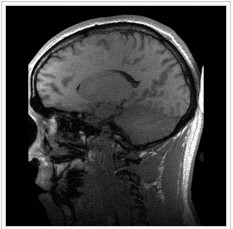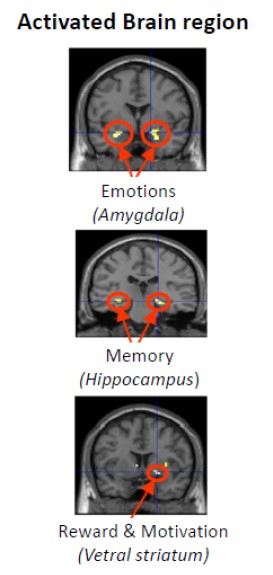Marketing to the Subconscious Mind
Date: February 19, 2016Category: Author: David Hall

MRI scan of the brain
Neuromarketing is a growing area of marketing research.
It explores consumer response to marketing using techniques such as EEG brain sensors, fMRI brain imaging, and galvanic skin response. It aims to get inside the subconscious mind to find out what really persuades people to make a marketing decision.
Michael Andre, who has an adjunct role with Infinity Dental Web as a consultant, was one of the early researchers in neuromarketing. Originally from Austria, before he came to the United States he was managing director of the Grey Marketing Group in Dusseldorf, Germany.
His interest in neuromarketing goes back to a demonstration conducted by a professor in a marketing class at the University of Vienna in the early 1980s. The professor asked for ten smokers to volunteer. Each had a preferred brand which they swore was the brand that tasted the best to them. However, when they were blindfolded, not only were they unable to identify their favorite brand, they typically ranked that favorite brand as inferior in taste, in some cases as the worst tasting brand. Similar results were seen with blind taste tests of coffee and mineral water brands.
Andre was profoundly influenced by this surprising result.
Michael Andre’s neuromarketing study
At the time, science was unable to demonstrate what was really going on in the brains of these test subjects. But later, when Andre was managing director at Grey, neuroscience had advanced to the point that researchers could examine, with fMRI scans, what was actually happening on a subconscious level with matters like this.
At the time, competing hair care product companies were using different marketing approaches. One was using glamorous, almost perfect-looking models to market its products. Another was using women who were attractive but had small flaws—women like those you would likely see daily on the street. Andre conducted a study to examine women’s reactions to these two campaigns. He assembled 22 subjects, all women, 12 of whom used one brand and 10 who used the other. When asked which models they preferred, 18 of the subjects said they preferred the more ordinary-looking women, and only two preferred the glamorous models. This was in agreement with conventional thinking among marketing professionals at the time.
However, when Andre examined the fMRI scans, he found that the opposite was actually true. The glamour models triggered a much stronger positive emotion in the subjects, as indicated by the sample scans on the left. Consciously, they had decided that the ordinary-looking but attractive women were “more like me,” so they preferred them.
Subconsciously, however, they were thinking that they would really like to be like the glamour models. They weren’t lying—they simply didn’t understand what was happening to them subconsciously.
Implications for your dental practice
Other neuromarketing studies firmly established that the decision to purchase a product, or, in the case of the marketing of a dental practice, the decision to make an appointment with a particular dentist, is made subconsciously very early in the exposure to the dental practice.
In other words, the prospective patient isn’t even aware yet that they have made a decision.
Initial impressions, however, trigger a feeling of trust and the patient makes the decision subconsciously. What happens after that is that the patient looks for information to validate his or her decision. If the information they later find disappoints them, their conscious may overrule their subconscious and they will look for another dentist. However, if the initial reaction is negative, it is unlikely that the logical information presented will be able to overcome the subconscious negative reaction.
We know from our own research and experience that the primary emotion that needs to be cultivated in a prospective patient is trust.
And if the patient is searching on the Internet, the first spark of trust is created by their impression of the practice’s website. The patient will then read as much as they feel they need to in order to validate that trust. Then, about 56 percent of potential patients check online reviews. If all of that matches, they will seek an appointment with the dentist.
Bottom line—to be effective in your marketing, you can’t deal with just logic. Yes, logic is an essential ingredient in presenting a dentist to searchers on the Internet. But the bigger key to getting your phone to ring is understanding what is happening subconsciously with your prospective patients.


Leave a Reply